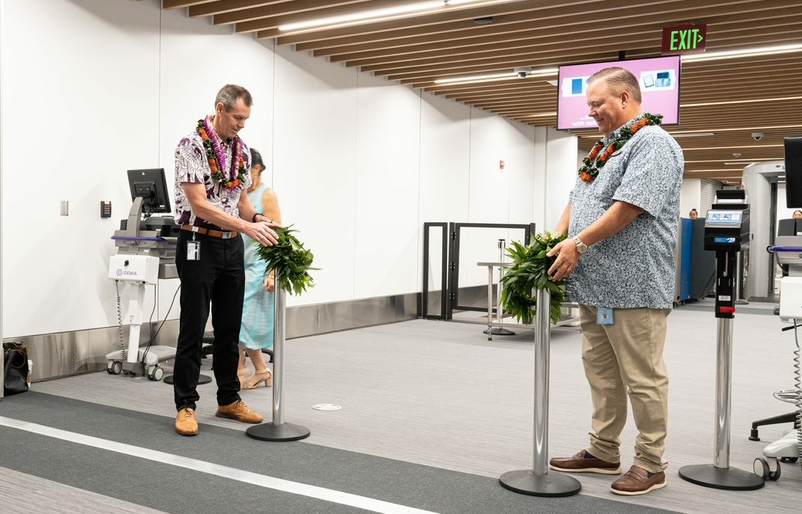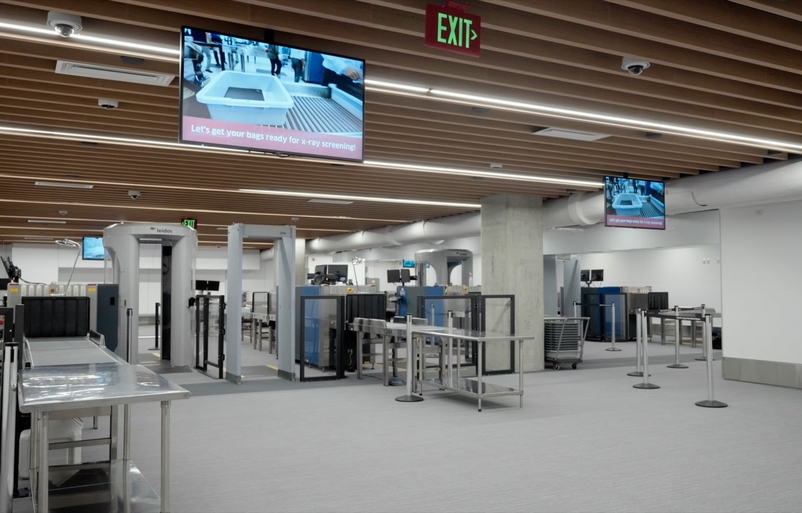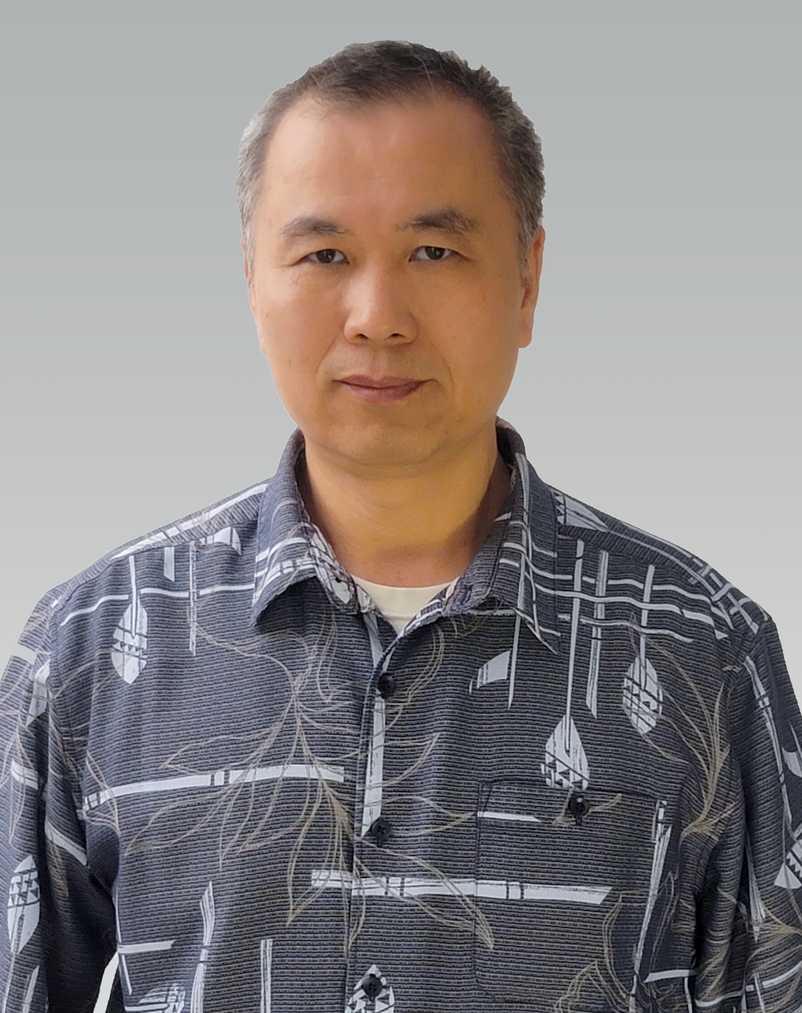This profile is a continuation of a monthly blog series dedicated to outlining some of the exciting career paths of Hawaiian Airlines’ leaders. To view more executive profiles, click here.
When Hawaiian Airlines approached Aaron Alter in 2015 to become its chief legal officer, he couldn’t refuse. Accepting the job meant returning home to work for the airline he grew up with after 40 years away from the islands.
“Hawaiian has always been the flagship airline for the state; I can't think of another airline that is as synonymous with a place as Hawaiian is for Hawaiʻi,” he reflected.
Alter was raised in Hawaii Kai, on Oʻahu’s southeastern shore, and is the oldest—and only boy—of three children. His father taught English as a second language (ESL) at the University of Hawaiʻi at Mānoa, and his mother stayed home to care for the family. After graduating from Kaiser High School in 1975, he left for college in Massachusetts, where his parents grew up, to study at Harvard University.
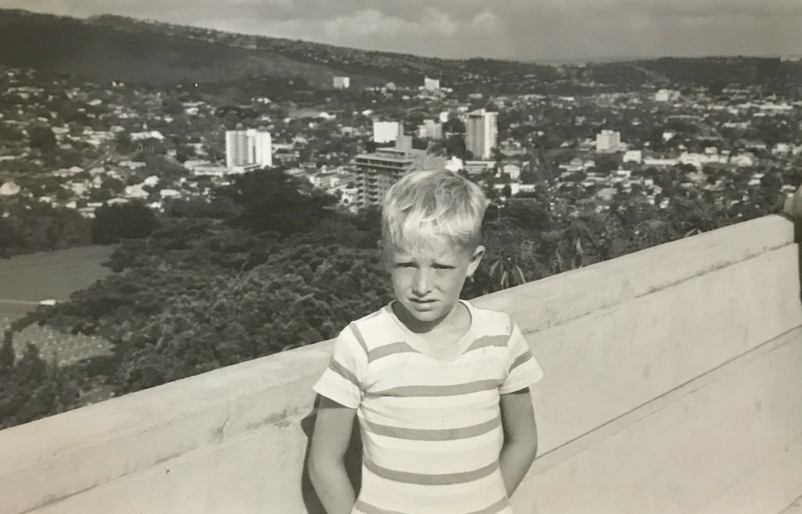
A photo of Alter as a child, with urban Honolulu in the 1960s in the foreground.
Alter dove into his first years of college filled with enthusiasm and took his time before honing in on a specific career path. “Growing up, I was told (on more than one occasion), ‘You never stop talking. You should be a lawyer!’ which was, of course, no compliment. So that planted the seed, but in the deep recesses of my mind,” he laughed.
“Many of my college classmates were far more career-oriented than I, and that farsightedness rubbed off a little on me. Over time, I got more motivated to consider a law degree. I took a couple of years off after college to work in Asia, and that time away helped crystallize my career ambitions.”
Some would describe Alter as having a Type A personality, a mindset he fostered at Harvard. Over a decade at the university, Alter pursued three academic degrees: a Bachelor of Arts in Economics and East Asian Studies from Harvard University, a Master of Business Administration from Harvard Business School, and a Juris Doctor from Harvard Law School. Alter also met his wife, Laurie, who was also from Hawaiʻi and a Punahou School graduate, during that time. “I guess I had to go 5,000 miles to meet a local girl!” he joked.
Post-graduate, the two moved cross country and settled in Palo Alto, California, where Laurie accepted a faculty position at Stanford Medical Center after finishing her head and neck surgery residency. There, Alter joined the international law firm Wilson Sonsini Goodrich & Rosati, where, for three decades, he practiced corporate and securities law by providing counsel to businesses small and large.
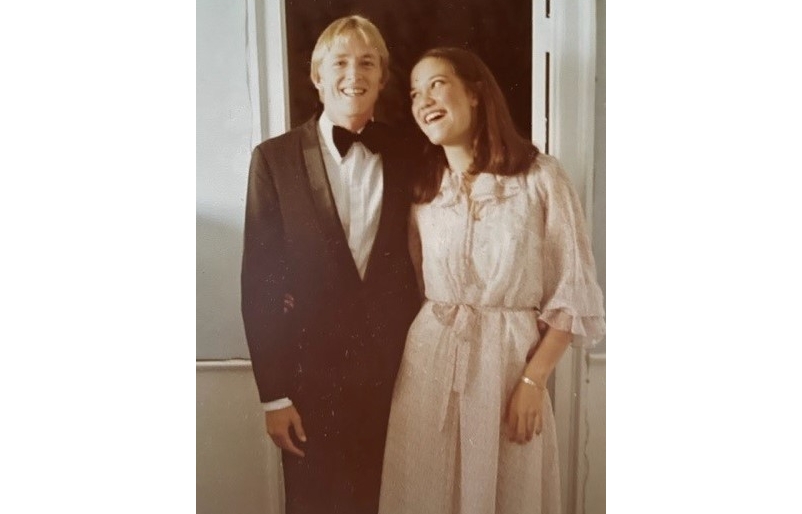
Aaron and Laurie during their college years
Hawaiian Holdings, Inc., the parent company of Hawaiian Airlines, became Alter's first airline client in 2009, and for years he served as a trusted advisor to its management team and board of directors. Then at the end of 2015, his predecessor Hoyt Zia retired, and the carrier's leadership tapped Alter for the job. “I already knew the management team. I knew the board of directors. I’d been preparing public filings for Hawaiian for many, many years. I was familiar with the company just from being ‘in the room,’ so it was a pretty smooth transition,” he said.
During that transition, the most significant change for Alter would be trading his private corner office in Palo Alto for an open-office floor plan at Hawaiian’s Honolulu headquarters. “Given the confidentiality considerations of a lawyer’s work, I was used to being able to close my office door and enter ‘the cone of silence.’ But I’ve adjusted and now enjoy sitting with my teammates,” he shared.
Alter was also challenged with entering a complex industry and working among leaders with decades of airline experience. However, thanks to his 30-year career in private law practice and six years as outside counsel to Hawaiian, Alter got up to speed relatively quickly.
“The law firm where I worked was an intense place, and my time in Silicon Valley was characterized by countless transactions and clients that ranged from startups to multinationals,” he said. “And it was so fascinating to be engaged in the evolution and growth of those companies, including Hawaiian. I was their de facto in-house general counsel, often providing guidance that transcended the law. I always believed that if you’re only being asked strictly legal questions, you’re likely not demonstrating an understanding of the client’s work nor doing everything you can to help them,” he added.
"From him, I learned you don’t have to be the loudest person in the room to command respect and be heard."
At Hawaiian Airlines, where no two days are the same in the law department, and the flow of projects and contracts seems endless, Alter focuses on fostering an environment of trust and collaboration to support his team’s ability to make well-informed decisions. He attributes his attention to leading with care and intention to his former boss, Larry Sonsini, one of the most influential mentors in his career.
“I remember being in tense boardroom meetings with Larry, working on deals critical to a client’s future, and he would start to speak – he spoke quite softly – and everyone would stop what they were doing to listen to what he had to say. From him, I learned you don’t have to be the loudest person in the room to command respect and be heard,” he said.
“Larry also made every client feel like they were his most important client, something I always strove to emulate. He also taught me about being truly present, making sure you’re focused on what’s in front of you, bringing all that you have to bear, and never compromising your north star,” he added.
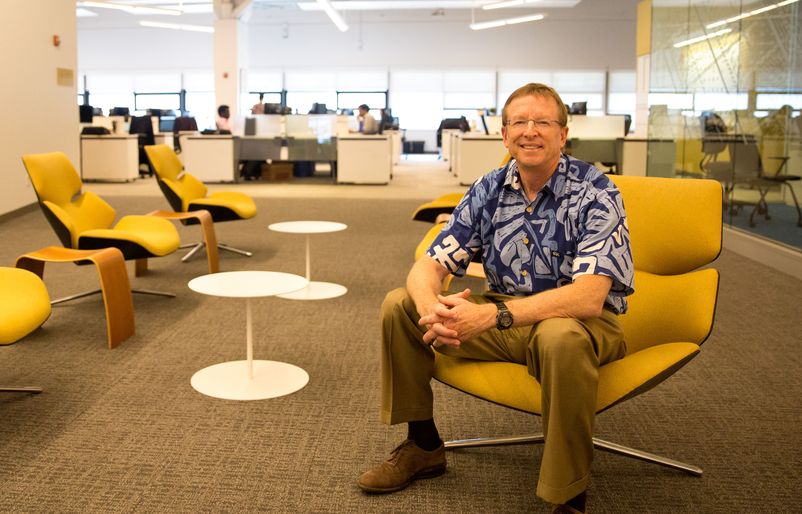
Alter at Hawaiian's Honolulu headquarters
Today, Alter leads a small legal team involved in nearly every facet of the business.
“One recent transformational project we worked on – and continue to work on – is our Amazon deal," he said. "The law department was heavily involved in supporting the management team in establishing a new business line for our company. Because each of our flights, except for charters, either land in or leave the Hawaiian Islands, we have a unique competitive advantage in serving every aspect of Hawaiʻi travel. Cargo flying for Amazon will greatly expand our core business and diversify our revenue and operations."
“The challenges we face as a company are daunting, yet people who live and work here have a sense of purpose and dedication to doing right for the company, the community, and the environment."
Alter and his team also provide management and support on matters ranging from cybersecurity and privacy to environmental, social and governance work, including sustainable aviation fuel commitments and career pipeline programs, among many other initiatives.
“The challenges we face as a company are daunting, yet people who live and work here have a sense of purpose and dedication to doing right for the company, the community, and the environment,” he said.
When asked about his management style, Alter said he thinks of himself as a compassionate leader who holds his team to a high standard and invests in them as people and colleagues.
“The notion of being a servant leader is one that I embrace with humility. I view my leadership success as more of a reflection of what I can do for my team and fellow officers,” he said. “I also expect a lot from others while never asking more of folks than I would ask of myself. Being a lawyer in a dynamic company can be very demanding and often require long hours and weekend work. I try to lead by example and ensure everyone on my team feels valued and appreciated for everything they do.”
During the busiest times at Hawaiian, Alter reminds himself and his team to always be impeccable with their counsel and stay focused on the task at hand – even in the wake of pushback.
“Making sure we understand what’s best for the company is our mantra, and we always speak truth to power,” he said. “My advice to lawyers in-house at clients as well as law firm colleagues while I was in private practice was that one’s integrity is paramount: the moment a client or business leader senses that you can be told to come up with a desired answer, regardless of whether or not you believe it to be true, is the minute they stop respecting you and taking your advice. Sometimes you must stand your ground – even if it’s not popular or welcome advice.”
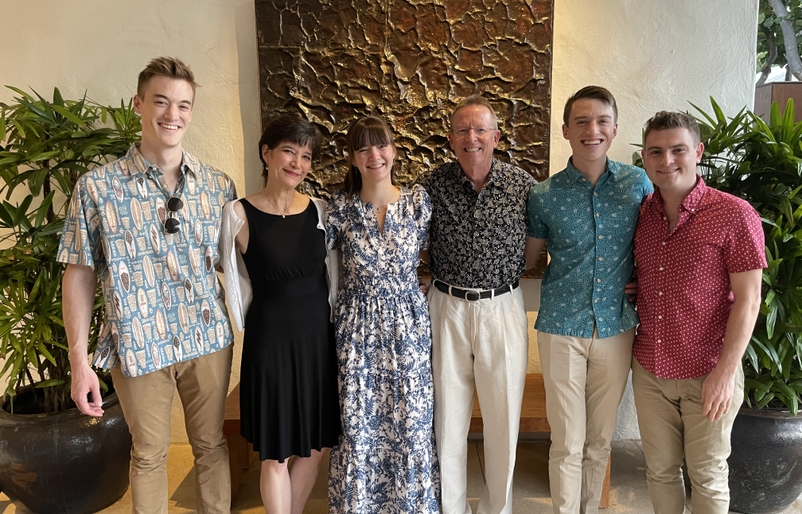
Aaron Alter with his family (L to R: his son Ethan, wife Laurie, daughter Abigail, himself, son Isaac and Isaac’s husband, Sam)
Aside from being chief legal officer, Alter is a father to two sons and a daughter – all pursuing their own careers. He also regularly travels to California, where his wife Laurie is an ear, nose and throat surgeon and works full-time as a clinical professor at Stanford Medical Center. He reflected on the challenges of both parents pursuing rigorous and demanding careers while raising kids, but proudly noted they made it work. “We both worked long hours but were fortunate to have help during the day, and we prioritized sitting down at dinner together every night whenever possible,” he said. “Laurie and I have always tried to support one another’s careers, even when it’s meant time apart. I’m happy our kids get to see that.”
When Alter isn’t maintaining the legal foundations of Hawaiʻi’s 94-year-old hometown airline, he’s buried in a book (historical pieces have piqued his interest lately, including “1776” by David McCullough and “These Truths” by Jill Lepore), enjoying a long run or swimming laps and taking in his island home to make up for four decades away.
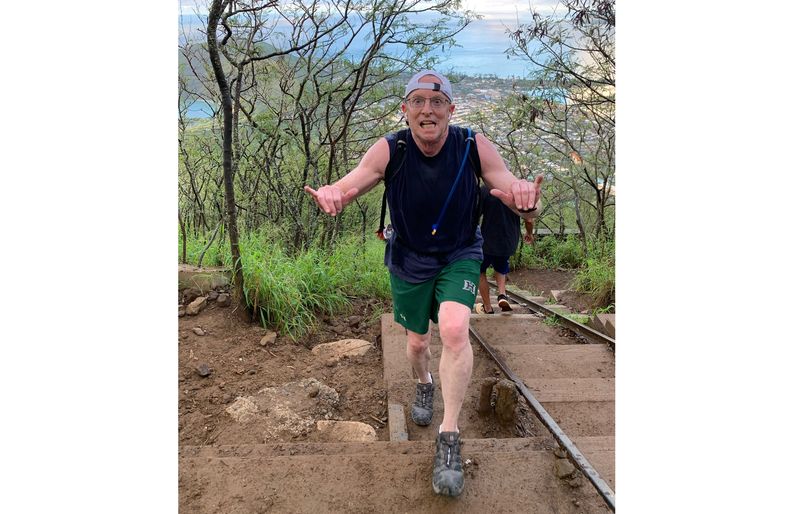
Alter posing at the top of East Honolulu's notoriously difficult Koko Crater Stairs
“I recall one business trip to Honolulu. I went for an evening run around Ala Moana Park. When I returned to my hotel, I sat on my lanai, looked out at the Koʻolau Mountains, and watched the clouds gathering above them, and I was just…bumming. I asked myself, ‘Why am I not happy? I have endorphins flowing through me, and I’m here in Hawaiʻi!" he recalled.
“I realized then that I was longing for this place that is my home after being away for so long. While I loved living in the Bay Area, I felt an abiding sense of belonging every time I flew into Honolulu. Moving back here to work for Hawaiian Airlines has been the ultimate homecoming.”





































